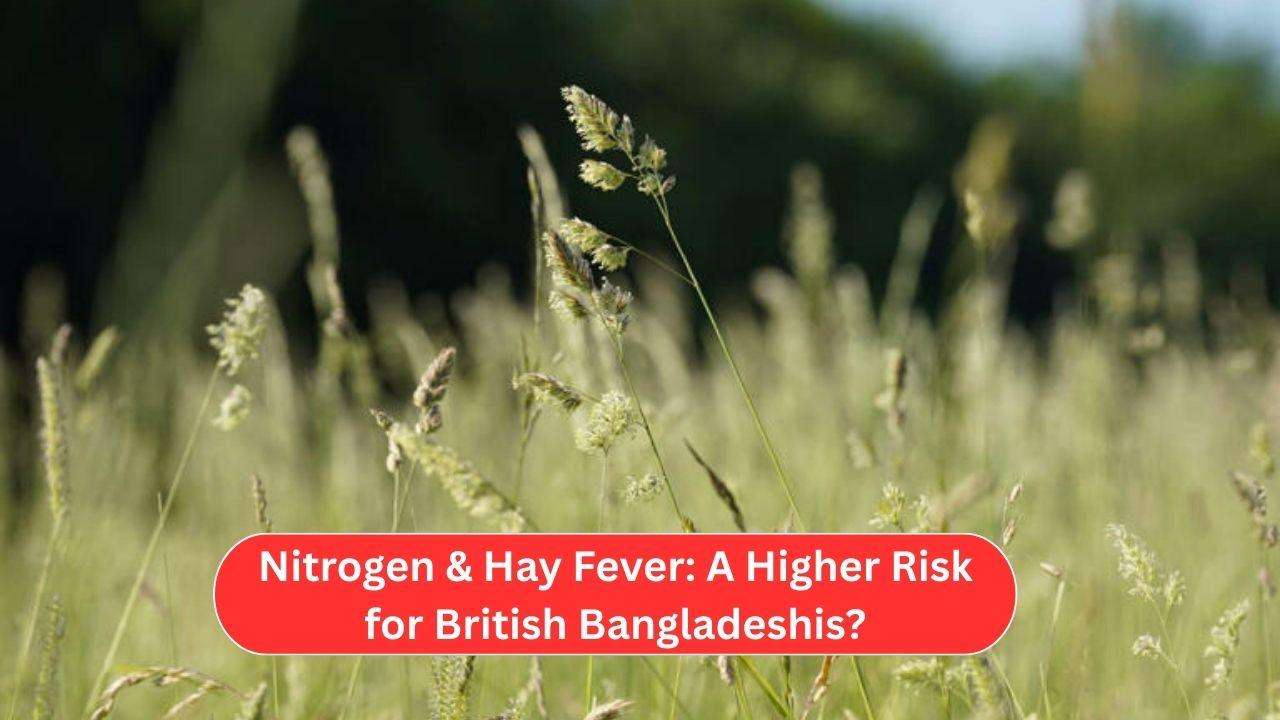As spring paints the UK landscape, the annual surge of hay fever grips millions. While the overall prevalence is significant, affecting roughly one in four individuals, a pressing question lingers: does the British Bangladeshi community, along with other ethnic groups like British Pakistanis and British Indians, experience a different burden of this seasonal allergy? Adding to the concern, a recent study published in The Lancet Planetary Health unveils a potential link between nitrogen-fertilised grasslands and a dramatic increase in pollen production and allergenic potency, a factor that could disproportionately impact susceptible populations.
Scarcity of Specific Data on British Bangladeshis
Currently, precise statistics detailing hay fever prevalence specifically within the British Bangladeshi community in the UK are not available in the provided information. National health surveys often aggregate data under broader categories like "South Asian," making it challenging to isolate the experiences of this distinct group.
A 2015 study focusing on anaphylaxis in Birmingham did indicate a higher incidence of severe allergic reactions among British South Asians compared to the White population. While this study didn't focus solely on hay fever and grouped British Bangladeshis with other South Asian ethnicities, it hints at potential variations in allergic responses that warrant further investigation.
Across the UK, general allergy statistics show that approximately 44% of British adults grapple with at least one allergy, with hay fever affecting an estimated 16 million people, potentially reaching up to 49% of the population in some reports.
Gender Trends: Suggesting Higher Impact on Women
Available data suggests a trend where women are more likely to report hay fever symptoms than men. One survey indicated that 27% of female respondents experienced hay fever, identifying it as the most common condition among women in that study. Younger adults, particularly those under 35, also appear to exhibit a higher susceptibility to allergies in general.
Nitrogen Fertilisation: A Potential Amplifier of Allergy for All
The groundbreaking study in The Lancet Planetary Health introduces a concerning environmental dimension to the hay fever problem. Researchers discovered that grasslands treated with nitrogen fertilisers can yield up to six times more pollen compared to their unfertilised counterparts. Alarmingly, this nitrogen-boosted pollen also appears to be more potent, triggering a 5.1-fold increase in sensitivity in the immune cells of allergy sufferers during laboratory tests.
Scientists theorize that existing atmospheric nitrogen pollutants may already be contributing to increased allergen release from pollen. The new research strongly suggests that nitrogen fertilisers, a significant source of environmental pollution, could be substantially amplifying this effect by altering the pollen's biochemical makeup, potentially increasing the amount or concentration of allergenic proteins.
Dr. Roy Neilson from The James Hutton Institute highlighted the study's innovative approach to pollen assessment, noting its reinforcement of the established link between high nitrogen levels and changes in plant life, increased pollen abundance, and heightened immune responses in grass pollen allergy sufferers.
Implications and the Urgent Need for Targeted Research
The findings of this study carry significant implications for public health and environmental policy. Reducing nitrogen emissions and carefully considering fertiliser use could serve a dual purpose: protecting biodiversity and potentially alleviating the growing burden of pollen allergies across the population, including the British Bangladeshi community. Integrating health considerations into agricultural and environmental strategies appears increasingly critical.
Crucially, there is a pressing need for more focused research to understand the specific prevalence and severity of hay fever within the British Bangladeshi community and other distinct ethnic groups in the UK. Factors such as genetic predispositions, localized environmental exposures, and socioeconomic conditions could all contribute to variations in how hay fever manifests. Detailed epidemiological studies targeting these communities are essential to inform tailored healthcare approaches and public health interventions.
As the hay fever season unfolds, a deeper understanding of both the environmental triggers, such as nitrogen pollution, and the potential variations in susceptibility among different ethnic groups, including British Bangladeshis, is paramount. Addressing this widespread and often debilitating condition requires a comprehensive strategy that considers both environmental factors and the specific vulnerabilities of different communities within the UK.



_4.jpg)
_2.jpg)



.svg)




_3.jpg)